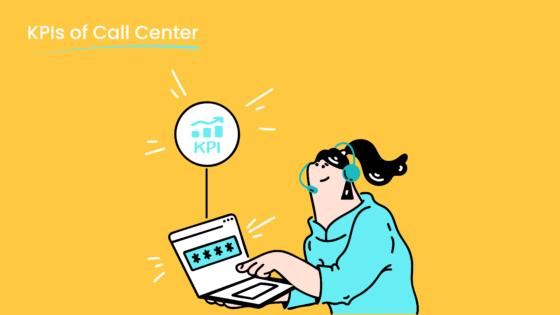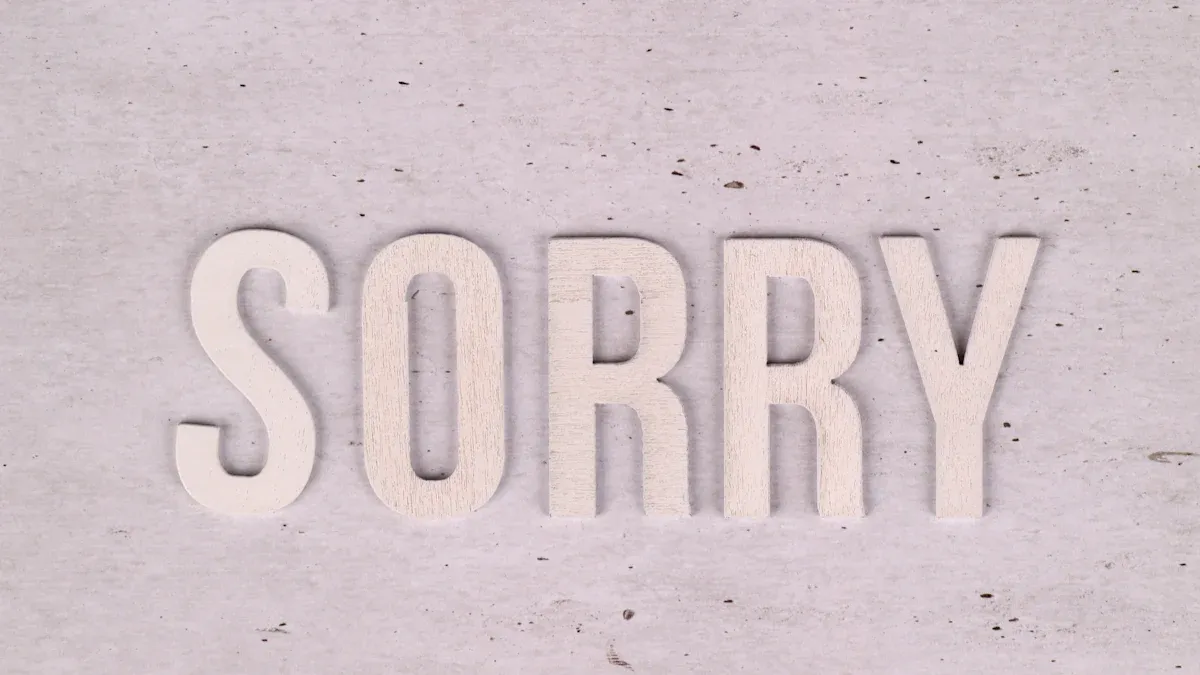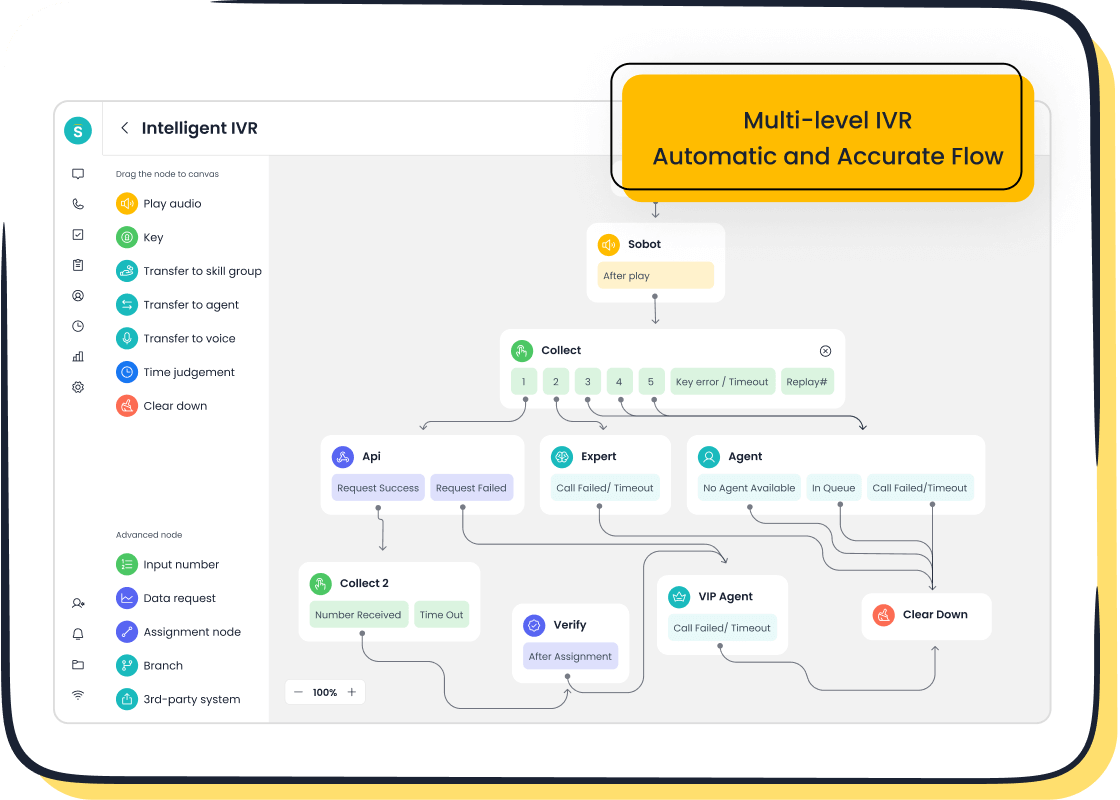Master the Art of Apology Emails with These 10 Templates

Mistakes happen, right? But when they do, how you handle them can make or break your relationship with a customer. Sending a well-crafted apology email for poor customer service isn’t just about saying sorry—it’s about showing that you value their trust. Did you know 96% of customers say they’ll stick with a company that owns up to its mistakes? That’s huge! And while poor customer service can sometimes tarnish a brand, a sincere apology email to a customer can turn things around quickly. Studies even show written apologies rebuild trust better than verbal ones in many cases. By using templates tailored to specific situations, you can address issues like poor customer service or billing errors effectively. Tools like Sobot can make crafting these emails easier, ensuring every apology feels personal and professional.
Key Principles for Writing an Effective Apology Email
Empathy: Understanding and Addressing Customer Concerns

Empathy is the heart of any sincere apology. When you show customers you understand their frustration, you’re already halfway to resolving the issue. For example, if a customer complains about delayed delivery, acknowledging how it disrupted their plans makes them feel heard. Empathetic responses—like validating concerns or actively listening—can boost customer satisfaction and loyalty. Businesses that prioritize empathy often stand out from competitors, creating stronger connections with their customers. Sobot’s AI-powered Voicebot can help you craft empathetic responses by analyzing customer sentiment and tailoring replies to their needs.
Clarity: Communicating the Issue and Resolution Clearly
Clear communication is key to addressing issues effectively. Customers appreciate transparency, especially when things go wrong. Explain what happened without deflecting blame, and outline the steps you’re taking to fix it. For instance, a company facing a billing error might say, “We apologize for the error and have corrected your invoice. Here’s a breakdown of the charges.” This approach builds trust and shows accountability. A study on crisis communication revealed that prompt acknowledgment and consistent messaging can rebuild trust even in challenging situations.
Accountability: Taking Responsibility for Mistakes
Owning up to mistakes is essential for building credibility. Customers value honesty, and a sincere apology email that takes responsibility can turn frustration into loyalty. For example, if a product defect occurs, saying, “We apologize for the inconvenience caused by the defect. We take full responsibility and are offering a replacement,” demonstrates accountability. Sobot’s unified workspace ensures agents have all the information they need to address complaints promptly and professionally, preventing unresolved issues from escalating.
Actionable Solutions: Offering Steps to Resolve the Problem

An apology email isn’t complete without a clear plan of action. Customers want to know how you’ll fix the problem and prevent it from happening again. For instance, if a customer experiences poor service, you might offer a discount or free consultation as compensation. Statistics show that 78% of customers are likely to return after a mistake if it’s resolved effectively. Sobot’s call tracking feature helps businesses analyze recurring issues and implement solutions to improve customer satisfaction.
Professionalism: Maintaining a Respectful and Polished Tone
A professional tone can make or break your apology email. Even when addressing complaints, it’s important to stay respectful and polished. Avoid overly casual language, but keep the tone warm and approachable. According to a PwC study, 73% of consumers prioritize customer service experiences over price, highlighting the importance of professionalism in maintaining trust. Sobot’s AI-driven tools ensure your apology email templates strike the perfect balance between sincerity and professionalism, helping you retain customers even after a mistake.
Apology Email Template for Poor Customer Service
Subject Line: "We’re Sorry for the Service You Received"
The subject line is your first chance to show sincerity. A clear and direct subject like this immediately signals to the customer that you’re taking their concerns seriously. Avoid vague phrases like “Regarding Your Recent Experience.” Instead, be upfront about the purpose of your email. This approach builds trust and encourages the customer to open the message.
Structure: Acknowledge the issue, express regret, and outline corrective actions
An effective apology email for poor customer service follows a simple yet impactful structure:
- Acknowledge the Issue: Start by addressing the specific problem. For example, “We understand that your recent interaction with our support team didn’t meet your expectations.”
- Express Regret: Apologize sincerely. Phrases like “We’re truly sorry for the inconvenience caused” show empathy.
- Outline Corrective Actions: Explain how you’re resolving the issue. For instance, “We’ve reviewed your case and provided additional training to the agent involved to ensure this doesn’t happen again.”
- Offer Compensation (Optional): If appropriate, include a goodwill gesture, such as a discount or free service.

This structure ensures your apology email to the customer feels genuine and actionable. Tools like Sobot’s unified workspace can help you craft these emails efficiently by providing all the customer’s details in one place, ensuring no issue goes unaddressed.
Customization Tips: Personalize based on the specific service failure
Generic apologies can feel insincere. Tailor your apology letter to customers by referencing their unique experience. For example, if a customer faced long wait times, acknowledge it directly: “We’re sorry for the extended wait during your recent call. We understand how valuable your time is.”
Use the customer’s name and mention specific details about their complaint. This level of personalization shows you’ve taken the time to understand their concerns. Sobot’s AI-powered tools can analyze customer sentiment and provide insights to help you craft a more empathetic and customized response.
If you’re looking for inspiration, explore apology email samples online. These samples can guide you in striking the right tone and structure. Remember, a well-crafted apology email for poor customer service can turn a negative experience into a positive one, strengthening your relationship with the customer.
Apology Email Template for Delayed Delivery

Subject Line: "Your Order Delay: Our Apologies"
A clear and direct subject line sets the tone for your apology email. When your customer sees this in their inbox, they’ll immediately know you’re addressing the issue. Avoid vague phrases like “Update on Your Order.” Instead, show empathy and accountability right from the start. This small step can make a big difference in how your customer perceives your response.
Structure: Explain the delay, apologize sincerely, and provide an updated timeline
When writing an apology email for delayed delivery, follow this simple structure:
- Acknowledge the Delay: Start by recognizing the inconvenience caused. For example, “We understand that your order delay may have disrupted your plans, and we’re truly sorry for the inconvenience.”
- Explain the Cause: Briefly share why the delay happened. Transparency builds trust. For instance, “Due to unexpected supply chain disruptions, your order has been delayed.”
- Provide an Updated Timeline: Let the customer know when they can expect their order. Be specific: “Your package is now scheduled to arrive by [date].”
- Offer a Solution or Compensation: If possible, include a goodwill gesture. A discount, free shipping, or a small gift can go a long way in rebuilding trust.
Using tools like Sobot’s unified workspace, you can access all relevant customer details to craft a personalized and professional apology email. This ensures no detail is overlooked, and your customer feels valued.
Customization Tips: Include tracking details or compensation if applicable
Personalization is key to making your apology email to the customer feel genuine. Use their name and reference their specific order. For example, “Hi [Customer Name], we noticed your order #[Order Number] has been delayed.” Including tracking details, like a link to their shipment status, gives them more control and reassurance.
If the delay is significant, consider offering compensation. A simple gesture like a 10% discount on their next purchase or free expedited shipping can turn a negative experience into a positive one. Sobot’s call tracking feature can help you identify recurring delivery issues, allowing you to proactively address them and improve customer satisfaction.
Remember, a well-crafted apology email isn’t just about fixing the problem—it’s about showing your customer that you care. By addressing their concerns thoughtfully and offering actionable solutions, you can rebuild trust and even strengthen your relationship.
Apology Email Template for Billing Errors
Subject Line: "We’ve Fixed the Billing Issue"
Your subject line is the first impression your customer gets. Make it clear and reassuring. A subject like "We’ve Fixed the Billing Issue" immediately tells the customer that their concern has been addressed. Avoid vague phrases like "Regarding Your Invoice." Instead, focus on transparency and accountability to build trust right from the start.
Structure: Acknowledge the error, explain the resolution, and reassure the customer
When crafting a customer apology letter for billing errors, follow this simple structure:
- Acknowledge the Error: Start by recognizing the mistake. For example, “We noticed an error in your recent invoice, and we sincerely apologize for the inconvenience.”
- Explain the Resolution: Clearly outline what you’ve done to fix the issue. Transparency is key. For instance, “We’ve corrected the billing amount and refunded the overcharged amount to your account.”
- Reassure the Customer: End with a note of reassurance. Let them know steps are in place to prevent future errors. For example, “We’ve updated our billing system to ensure this doesn’t happen again.”
This structure not only addresses the issue but also shows your commitment to resolving it. According to reports, acknowledging mistakes and demonstrating transparency fosters trust and strengthens customer relationships.
Sobot’s unified workspace can make this process seamless. By consolidating customer data, it ensures your team has all the details needed to craft a professional and personalized apology email. This reduces the chances of overlooking critical information.
Customization Tips: Include specific details about the correction
A generic apology email won’t cut it. Personalize your message by including specific details about the billing error. For example, mention the exact amount that was overcharged and the date of the transaction. A message like, “We’ve refunded $25.00 to your card ending in 1234, and you should see the amount reflected within 3-5 business days,” adds clarity and builds confidence.
If applicable, offer compensation to show goodwill. A small gesture, like a discount on their next purchase, can turn a negative experience into a positive one. Sobot’s call tracking feature can help identify recurring billing issues, enabling you to address them proactively and improve customer satisfaction.
Remember, a well-crafted apology email to a customer isn’t just about fixing the mistake. It’s about showing them you care and value their trust. By being transparent, empathetic, and solution-focused, you can turn a billing error into an opportunity to strengthen your relationship with the customer.
Apology Email Template for Product Defects

Subject Line: "We’re Sorry About the Product Issue"
Your subject line sets the tone for your apology email. Make it clear and empathetic. A subject like "We’re Sorry About the Product Issue" immediately shows your customer that you’re taking their concern seriously. Avoid vague phrases like "Regarding Your Recent Purchase." Instead, be upfront and transparent. This approach builds trust and encourages the customer to engage with your message.
Structure: Apologize for the defect, offer replacement or refund, and explain next steps
When writing an apology email for a defective product, follow this simple structure:
- Apologize for the Defect: Start by acknowledging the issue. For example, “We’re truly sorry that the product you received didn’t meet your expectations.”
- Offer a Replacement or Refund: Provide a clear solution. Say something like, “We’d like to offer you a replacement at no additional cost or a full refund, whichever you prefer.”
- Explain Next Steps: Let the customer know what to do next. For instance, “Please reply to this email with your preference, and we’ll process it immediately.”

This structure ensures your apology email feels genuine and actionable. According to a study by PwC, 73% of customers value experiences over price, so showing you care can make all the difference. Tools like Sobot’s unified workspace can help you craft these emails efficiently by consolidating customer details, ensuring no issue goes unresolved.
Customization Tips: Tailor the message to the product and customer’s experience
A generic apology email won’t resonate with your customer. Personalize your message by referencing their specific experience. For example, “Hi [Customer Name], we noticed the blender you purchased from us didn’t function as expected. We’re sorry for the inconvenience this caused.”
Include details about the product and how you’re addressing the issue. If the defect was due to a manufacturing error, explain how you’re working to prevent it in the future. Offering a small gesture, like a discount on their next purchase, can also help rebuild trust. Sobot’s AI-powered tools can analyze customer sentiment and provide insights to help you craft a more empathetic and customized response.
Remember, a well-crafted apology email to a customer isn’t just about fixing the problem. It’s about showing them you care and value their trust. By addressing their concerns thoughtfully and offering actionable solutions, you can turn a negative experience into a positive one.
Apology Email Template for Miscommunication
Subject Line: "Our Apologies for the Misunderstanding"
A clear subject line sets the tone for your apology email. When a customer sees “Our Apologies for the Misunderstanding,” they immediately know you’re addressing their concern. Avoid vague phrases like “Clarification Needed” or “Follow-Up on Your Inquiry.” Instead, use language that shows empathy and accountability. This approach reassures the customer that you’re taking their issue seriously.
Structure: Clarify the miscommunication, apologize, and provide accurate information
When writing an apology email for miscommunication, follow these steps:
- Clarify the Miscommunication: Start by explaining the misunderstanding in simple terms. For example, “We noticed there was confusion regarding the delivery date of your order.”
- Apologize Sincerely: Acknowledge the impact of the error. Say something like, “We’re truly sorry for any inconvenience this caused.”
- Provide Accurate Information: Share the correct details to resolve the issue. For instance, “Your package is scheduled to arrive on [date], and you can track it using this link: [tracking link].”
- Offer a Solution (Optional): If appropriate, include a goodwill gesture, such as a discount or expedited service.
Research shows that clear communication in apology emails rebuilds client confidence. Customers appreciate when businesses take ownership of mistakes and provide straightforward solutions. By addressing the issue head-on, you can turn a negative experience into a positive one.
Customization Tips: Address the specific misunderstanding directly
Generic apologies often feel insincere. Tailor your apology email to the customer’s unique situation. For example, if a customer misunderstood your return policy, acknowledge it directly: “We understand our return policy may not have been clear. To clarify, items can be returned within 30 days of purchase.”
Use the customer’s name and reference their specific concern. This personal touch shows you’ve taken the time to understand their issue. Tools like Sobot’s unified workspace make this process seamless by consolidating customer data, ensuring your response is both accurate and empathetic.
Remember, a well-crafted apology email to a customer isn’t just about fixing the problem. It’s about showing them you care and value their trust. By addressing miscommunication thoughtfully and providing actionable solutions, you can strengthen your relationship with the customer and build long-term loyalty.
Apology Email Template for Missed Deadlines
Subject Line: "We’re Sorry for Missing the Deadline"
A clear subject line sets the stage for your apology email. When your customer sees “We’re Sorry for Missing the Deadline,” they immediately know you’re addressing their concern. Avoid vague phrases like “Update on Your Project” or “About Your Recent Order.” Instead, be upfront and show accountability. This small step helps rebuild trust right from the start.
Structure: Acknowledge the missed deadline, explain the cause, and offer a new timeline
When crafting an apology email for a missed deadline, follow this simple structure:
- Acknowledge the Missed Deadline: Start by recognizing the delay and its impact. For example, “We understand that missing the agreed timeline may have disrupted your plans, and we sincerely apologize.”
- Explain the Cause: Briefly share why the delay occurred. Transparency matters. For instance, “The delay was due to unforeseen supply chain disruptions, which we’re actively addressing.”
- Offer a New Timeline: Provide a clear and realistic timeline for completion. Say something like, “We’ve expedited the process, and your project will now be completed by [date].”
- Reassure the Customer: End with a note of reassurance. Let them know what steps you’re taking to prevent future delays.
This structure ensures your apology email feels genuine and actionable. Customers value honesty and a clear plan for resolution.
Customization Tips: Include steps to prevent future delays
A generic apology email won’t resonate with your customer. Personalize your message by referencing their specific situation. For example, “Hi [Customer Name], we’re sorry for the delay in delivering your custom order. We’ve adjusted our production schedule to ensure timely delivery moving forward.”
To restore customer faith, include steps you’re taking to prevent similar issues. These might include:
- Acknowledging the mistake and taking full accountability.
- Offering a sincere apology to show respect for the customer’s time.
- Providing a clear, actionable plan with revised timelines and milestones.
Using tools like Sobot’s unified workspace, you can access all relevant customer details to craft a personalized and professional apology email. This ensures no detail is overlooked, and your customer feels valued.
Remember, a missed deadline doesn’t have to mean a lost customer. By addressing the issue thoughtfully and offering actionable solutions, you can rebuild trust and even strengthen your relationship.
Apology Email Template for Overcharging
Subject Line: "We’ve Corrected the Overcharge"
Your subject line is the first thing your customer sees. Make it clear and reassuring. A subject like "We’ve Corrected the Overcharge" immediately tells them the issue has been resolved. Avoid vague phrases like "Regarding Your Invoice." Instead, focus on transparency and accountability. This small step helps rebuild trust right from the start.
Structure: Apologize for the overcharge, explain the correction, and reassure the customer
When writing an apology email for overcharging, follow this simple structure:
- Apologize for the Overcharge: Start by acknowledging the mistake. For example, “We sincerely apologize for the overcharge on your recent transaction.”
- Explain the Correction: Clearly outline what you’ve done to fix the issue. Transparency is key. For instance, “We’ve refunded the overcharged amount of $15.00 to your account ending in 1234.”
- Reassure the Customer: End with a note of reassurance. Let them know steps are in place to prevent future errors. For example, “We’ve updated our billing system to ensure this doesn’t happen again.”
This structure not only addresses the issue but also shows your commitment to resolving it. Tools like Sobot’s unified workspace can make this process seamless. By consolidating customer data, it ensures your team has all the details needed to craft a professional and personalized apology email.
Customization Tips: Include refund details and contact information
A generic apology email won’t cut it. Personalize your message by including specific details about the overcharge. For example, mention the exact amount refunded and the date of the transaction. A message like, “We’ve refunded $25.00 to your card ending in 5678, and you should see the amount reflected within 3-5 business days,” adds clarity and builds confidence.
If applicable, offer compensation to show goodwill. A small gesture, like a discount on their next purchase, can turn a negative experience into a positive one. Sobot’s call tracking feature can help identify recurring billing issues, enabling you to address them proactively and improve customer satisfaction.
Remember, a well-crafted apology email to customer isn’t just about fixing the mistake. It’s about showing them you care and value their trust. By being transparent, empathetic, and solution-focused, you can turn a billing error into an opportunity to strengthen your relationship with the customer.
Apology Email Template for Unavailable Products
Subject Line: "We’re Sorry the Product is Out of Stock"
Your subject line is the first thing your customer sees. Make it clear and empathetic. A subject like "We’re Sorry the Product is Out of Stock" immediately shows you’re addressing their concern. Avoid vague phrases like "Update on Your Order." Instead, use language that reflects accountability and care. This small step helps build trust and encourages the customer to open your email.
Structure: Apologize for the unavailability, suggest alternatives, and provide updates
When crafting an apology email for unavailable products, follow this structure:
- Apologize for the Unavailability: Start by acknowledging the issue. For example, “We’re truly sorry that the product you wanted is currently out of stock.”
- Suggest Alternatives: Offer similar products or services. Say something like, “While we restock, we’d love to recommend these alternatives that might meet your needs.”
- Provide Updates: Let the customer know when the product will be available again. Be specific: “We expect the item to be back in stock by [date].”
- Offer a Solution or Compensation: Include a goodwill gesture, such as a discount or priority access to the restocked item.
This structure ensures your apology email feels genuine and actionable. According to a HubSpot study, 93% of customers are more likely to return to a company that offers excellent customer service, even after a mistake. Tools like Sobot’s unified workspace can help you access customer details quickly, ensuring your response is personalized and professional.

Customization Tips: Offer discounts or priority access to restocked items
A generic apology email won’t resonate with your customer. Personalize your message by referencing their specific order or preferences. For example, “Hi [Customer Name], we noticed the [Product Name] you wanted is out of stock. We’re sorry for the inconvenience this caused.”
To rebuild trust, offer something extra. Discounts, free shipping, or early access to the restocked product can make a big difference. For instance, “As a valued customer, we’d like to offer you 10% off your next purchase or priority access to the item once it’s back in stock.” Sobot’s call tracking feature can help identify recurring stock issues, allowing you to address them proactively and improve customer satisfaction.
Remember, a well-crafted apology email to customer isn’t just about fixing the problem. It’s about showing them you care and value their trust. By addressing their concerns thoughtfully and offering actionable solutions, you can turn a negative experience into a positive one.
Apology Email Template for Technical Issues
Subject Line: "We’re Working to Fix the Technical Problem"
Your subject line is the first thing your customer sees. Make it clear and reassuring. A subject like "We’re Working to Fix the Technical Problem" immediately tells them you’re addressing their concern. Avoid vague phrases like "Regarding Your Issue." Instead, use language that shows accountability and empathy. This small step builds trust and encourages the customer to open your email.
Structure: Acknowledge the issue, explain the resolution process, and provide a timeline
When writing an apology email for technical issues, follow this structure:
- Acknowledge the Issue: Start by recognizing the problem. For example, “We’re aware of the technical difficulties you’ve experienced with our platform, and we sincerely apologize for the inconvenience.”
- Explain the Resolution Process: Share what steps you’re taking to fix the issue. Transparency matters. Say something like, “Our technical team is actively working to resolve the problem, and we’ve identified the root cause.”
- Provide a Timeline: Let the customer know when they can expect the issue to be resolved. Be specific: “We anticipate the issue will be fully resolved by [date].”
This structure ensures your apology email feels genuine and actionable. According to a study by Salesforce, 80% of customers say the experience a company provides is as important as its products or services. Tools like Sobot’s AI-powered Voicebot can help you analyze customer sentiment and craft responses that address their concerns effectively.
Customization Tips: Include links to troubleshooting resources
Personalization makes your apology email to customer more impactful. Use their name and reference their specific issue. For example, “Hi [Customer Name], we noticed you encountered an error while using our app. We’re sorry for the inconvenience this caused.”
Include helpful resources to empower your customer. Add links to troubleshooting guides or FAQs. For instance, “While we work on resolving the issue, you can find temporary solutions here: [link].” This shows you care about minimizing their frustration. Sobot’s unified workspace can streamline this process by consolidating customer data, ensuring your response is accurate and empathetic.
Remember, a well-crafted apology email isn’t just about fixing the problem. It’s about showing your customer you value their trust. By addressing their concerns thoughtfully and providing actionable solutions, you can turn a technical hiccup into an opportunity to strengthen your relationship.
Apology Email Template for Poor Communication During Support
Subject Line: "We’re Sorry for the Support Experience"
Your subject line sets the tone for your apology email. A clear and empathetic subject like "We’re Sorry for the Support Experience" immediately shows your customer that you’re addressing their concern. Avoid vague phrases like "Follow-Up on Your Inquiry." Instead, use language that reflects accountability and care. This small step encourages the customer to open your email and engage with your message.
Structure: Apologize for the poor communication, outline improvements, and invite feedback
When writing an apology email for poor communication during support, follow this structure:
- Apologize for the Poor Communication: Start by acknowledging the issue. For example, “We’re truly sorry for the lack of clarity during your recent support interaction.”
- Outline Improvements: Share what steps you’re taking to improve. Say something like, “We’ve reviewed our processes and provided additional training to our support team to ensure better communication moving forward.”
- Invite Feedback: End by inviting the customer to share their thoughts. For instance, “We’d love to hear your feedback to help us improve further. Please reply to this email or fill out this short survey: [link].”
This structure ensures your apology email feels genuine and actionable. According to customer feedback reports, addressing issues raised in feedback shows your commitment to resolving problems and improving service quality. Following up with customers after sending an apology can even turn dissatisfied customers into loyal ones.
Customization Tips: Personalize based on the customer’s specific support interaction
A generic apology email won’t resonate with your customer. Personalize your message by referencing their specific experience. For example, “Hi [Customer Name], we noticed there was confusion during your recent chat with our support team about [specific issue]. We’re sorry for the inconvenience this caused.”

Use the customer’s name and mention details about their interaction. This personal touch shows you’ve taken the time to understand their concerns. Tools like Sobot’s unified workspace make this process seamless by consolidating customer data, ensuring your response is accurate and empathetic.
Remember, a well-crafted apology email to customer isn’t just about fixing the problem. It’s about showing them you care and value their trust. By addressing their concerns thoughtfully and inviting feedback, you can strengthen your relationship and build long-term loyalty.
How Sobot’s Voice/Call Center Enhances Apology Emails
Leveraging Sobot’s Unified Workspace for Personalized Apologies
Crafting an apology email that feels personal can be tricky, especially when you’re juggling multiple customer interactions. That’s where Sobot’s unified workspace shines. It brings all your customer data—like past purchases, complaints, and communication history—into one easy-to-navigate dashboard. Imagine responding to a customer’s delayed delivery complaint with a detailed apology email that references their specific order and offers a tailored solution. This level of personalization shows you care and helps rebuild trust. Studies show that 72% of customers expect businesses to understand their needs, and Sobot makes meeting this expectation effortless.
Using Call Tracking to Address Customer Concerns Effectively
Ever wondered why certain issues keep popping up? Sobot’s call tracking feature helps you spot patterns in customer complaints. For example, if multiple customers report billing errors, you can identify the root cause and address it proactively. This insight not only improves your operations but also makes your apology email to customer more impactful. You can confidently say, “We’ve identified the issue and taken steps to ensure it doesn’t happen again.” Customers appreciate this transparency, and it boosts their confidence in your brand.
Ensuring Professionalism with AI-Powered Voicebot Features
Professionalism matters, even in an apology. Sobot’s AI-powered Voicebot analyzes customer sentiment and suggests the right tone for your apology email. Whether the issue is a technical glitch or poor communication during support, the Voicebot ensures your response feels empathetic and polished. Plus, it can even draft email templates, saving you time while maintaining quality. A professional yet warm apology email can turn a frustrated customer into a loyal one.
Apology emails are more than just saying sorry—they’re your chance to rebuild trust and loyalty. Personalization and follow-up turn mistakes into opportunities to strengthen relationships. With Sobot’s tools, like its unified workspace and AI-powered Voicebot, you can craft an apology email to customer that feels genuine and professional, keeping every customer satisfied.
FAQ
What makes an apology email effective?
An effective apology email shows empathy, takes responsibility, and offers a clear solution. Personalization is key. Tools like Sobot’s unified workspace help you craft tailored responses effortlessly.
How can Sobot improve my customer service emails?
Sobot’s AI-powered tools analyze customer sentiment, consolidate data, and suggest professional responses. This ensures your emails are empathetic, accurate, and personalized for every customer interaction.
Should I always offer compensation in apology emails?
Not always. Compensation depends on the situation. For minor issues, a sincere apology may suffice. For bigger mistakes, consider discounts or refunds to rebuild trust.
💡 Pro Tip: Use Sobot’s call tracking to identify recurring issues and proactively address them before they escalate into customer complaints.
See Also
Best Customer Support Tools to Use in 2024
Essential Advice for Selecting Social Media Support Tools
Leading Customer Feedback Software Options for 2024
